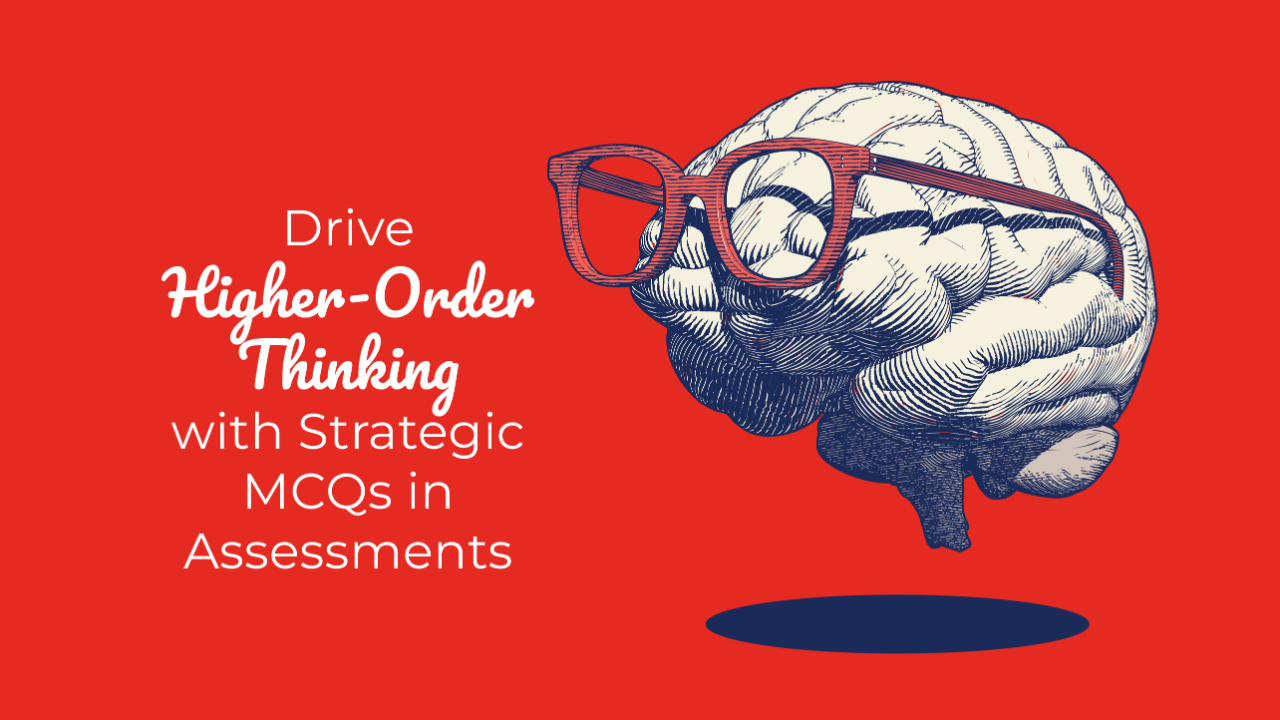Drive Higher-Order Thinking with Strategic MCQs in Assessments
by Amanda Kizer

An effective employee training program not only imparts knowledge but also fosters critical thinking and problem-solving skills. It's essential that your training assessments reflect this aim by testing higher-order thinking skills. Multiple-choice questions (MCQs), when crafted correctly, can serve this purpose, contrary to a common belief that they only test memorization.
Higher-Order Thinking and Multiple-Choice Questions
Higher-order thinking is cognitive processing that involves critical, logical, reflective, metacognitive, and creative thinking. It includes skills such as analyzing, evaluating, and creating, as outlined in Bloom's revised taxonomy.
Developing MCQs that effectively test these skills can be challenging but is certainly achievable. Here's how you can do it.
Crafting Effective Higher-Order Thinking Questions
To test higher-order thinking, your questions should move beyond simple recall of facts. Here are some examples from a management training program that illustrate the progression from lower- to higher-order thinking.
- Lowest: What is the first step in the conflict resolution process? (Recall)
- Higher: Why is it important to identify the source of conflict in conflict resolution? (Understanding)
- Even Higher: Given a situation where two team members have a conflict over resource allocation, how would you apply the conflict resolution process? (Applying/Analyzing)
The first question simply tests recall of a process, whereas the second digs deeper into understanding. The third question, however, requires application and analysis of the conflict resolution process in a realistic scenario.
- Lowest: What is transformational leadership? (Recall)
- Higher: How does transformational leadership differ from transactional leadership? (Understanding/Comparing)
- Even Higher: Imagine you are managing a team that lacks motivation. How might a transformational leadership approach help improve the situation? (Applying/Evaluating)
Again, the first question only checks memory. The second question requires an understanding of the concept and comparison between two leadership styles. The third question goes a step further, requiring evaluation and application of the concept.
- Lowest: What are the components of effective communication? (Recall)
- Higher: Why is active listening an essential part of effective communication? (Understanding)
- Even Higher: Given a scenario where a team member misunderstands your instructions, how would you use effective communication principles to resolve the situation? (Applying/Analyzing)
Here too, the first question merely tests recall. The second question tests understanding. The third question demands the application and analysis of effective communication principles, requiring higher-order thinking.
Review Your Training Assessment Questions
Here are actions you can take to start evaluating and improving your multiple choice assessment questions.
- Assess Cognitive Level. Identify the cognitive level your questions are currently testing. Aim for questions that test higher levels like applying, analyzing, evaluating, and creating.
- Create Realistic Scenarios. Higher-order thinking questions often involve applying knowledge to real-life scenarios. Include these in your assessments to encourage critical thinking.
- Align with Training Objectives. Ensure your questions align with the training's objectives. If the goal is to develop problem-solving skills, your questions should test this ability.
Writing multiple-choice questions that effectively test higher-order thinking is a powerful way to enhance your employee training assessments. By challenging your trainees to apply, analyze, and evaluate information, rather than just recalling it, you can foster critical thinking skills that will serve them well in their roles.
References:
Krathwohl, D. R. (2002). A Revision of Bloom's Taxonomy: An Overview. Theory Into Practice, 41(4), 212-218.
You May Also Like
These Related Stories

Mastering Cognitive Load for Workplace Learning Success

Effective Stem Construction for Multiple-Choice Questions


No Comments Yet
Let us know what you think